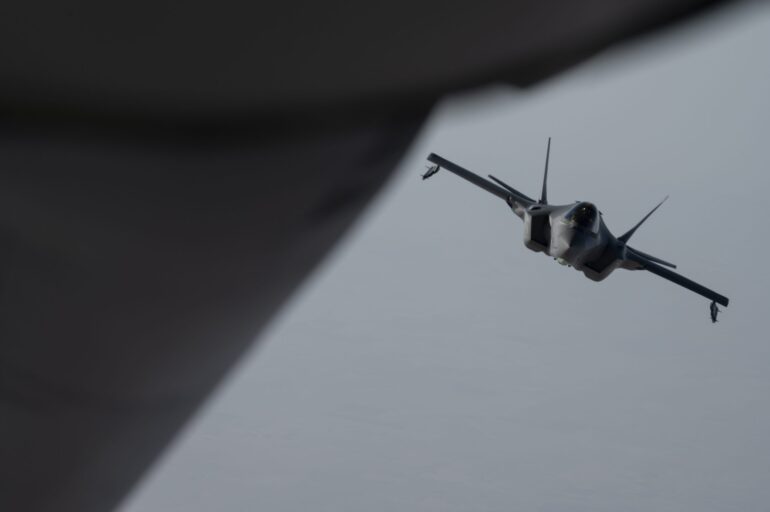TL;DR:
- Deputy Secretary of Defense unveils Replicator initiative to deploy thousands of attritable autonomous systems in 18-24 months.
- Aim is to develop smart, disposable air, land, and sea vehicles to outmaneuver adversaries.
- Motivated by China’s military growth, US aims to counter with innovative mass deployment of its own.
- Limited countries, including China, Russia, Israel, exploring AI for military; US focuses on defensive applications.
- AI-enabled airspace monitoring system around Washington D.C. enhances threat detection using advanced technology.
- Teleidoscope’s technology, after 18 months of testing, secures $100 million production contract for efficient defense solutions.
- AI investment empowers US military with cutting-edge capabilities while maintaining ethical approach.
- Escalating AI race with China and Russia necessitates Pentagon’s proactive innovation.
Main AI News:
In the relentless pursuit to harness the potential of artificial intelligence (AI), the U.S. military is sparing no effort to ensure it remains at the forefront of technological advancements. Deputy Secretary of Defense Kathleen Hicks took the stage at a defense innovation conference to introduce the Pentagon’s ambitious Replicator initiative. This strategic endeavor is driven by the aspiration to swiftly deploy attritable autonomous systems on a massive scale, numbering in the thousands, across various domains. A timeline of 18 to 24 months has been set for this transformative feat.
In this context, the term “attritable” takes on paramount significance, signifying the capacity for these robotic assets to be considered expendable in high-priority missions. Drawing an analogy to the chess board, Hicks elucidated that these AI-driven assets serve as the military’s tactical pawns. The primary objective is to orchestrate the rapid evolution of intelligent, disposable air, land, and sea vehicles, capable of outmaneuvering adversaries with strategic finesse.
Hicks didn’t mince words when addressing the driving force behind this initiative. She pinpointed the escalating military prowess of China as a pivotal motivator. Her assertion that the U.S. will counterbalance China’s “mass with mass of our own” underscores the nation’s resolve to leverage American innovation for strategic advantage.
At present, only a select number of technologically advanced nations are actively integrating AI into military operations. Notably, this exclusive roster features China, Russia, Israel, and select European Union members. The U.S. approach, however, leans toward fortifying defensive capabilities rather than mounting offensive endeavors. A recent official announcement highlighted the deployment of an AI-enabled airspace monitoring system destined for the environs of Washington D.C. Crafted in collaboration with the unconventional Defense Department vendor, Teleidoscope, this advanced technology capitalizes on computer vision to dramatically enhance threat detection capacities, surpassing those of the erstwhile 9/11-era systems.
This breakthrough system boasts an impressive “tenfold increase in performance capability” when it comes to identifying suspicious airborne entities. Lt. Col. Kurtis Engleson elaborated on its intricacies, noting that it amalgamates machine learning advancements and augmented reality functionalities within surveillance cameras. This fusion empowers air battle managers to discern and classify flying objects within the National Capital Region airspace.
The journey to this point has been one of meticulous refinement. Teleidoscope’s technology underwent an exhaustive 18-month testing phase, ultimately culminating in the awarding of a substantial $100 million production contract this month. The ramifications are substantial, promising not only enhanced efficiency and efficacy but also the preservation of precious resources and lives. Heidi Shyu, the undersecretary of defense for research and engineering, underlined this paradigm shift, affirming that the technology expedites the transformation of operational necessities into tangible national defense solutions. The ripple effects of this innovation extend far beyond monetary savings, as the decisive edge engendered by such technology has the potential to safeguard lives.
This intensified investment in AI by the military signifies a resolute endeavor to bestow the U.S. armed forces with cutting-edge capabilities, all while upholding an ethical and responsible stance toward AI and autonomous systems. In an era characterized by competing nations, notably China and Russia, racing to deploy increasingly sophisticated AI assets, the disparity in technological prowess is narrowing at an exponential pace. For the Pentagon, the imperative to innovate preemptively in the face of these escalating threats has morphed into an exigent priority, and innovate they shall.
Conclusion:
The Pentagon’s aggressive investment in AI and autonomous technology marks a pivotal shift in modern defense strategies. The Replicator initiative’s focus on rapid deployment and smart technology highlights the urgency to outmatch global competitors. As the US military forges ahead, the market can anticipate heightened demand for AI solutions that enhance both defensive and strategic operations, ushering in a new era of military innovation and competition.

